|
Page < 1 2 3 4 5 6 7 8 9 10 11 12 13 14 15 16 17 18 19 20 21 22 23 24 25 >
Show
in alphabetical order
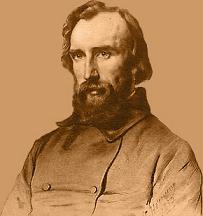 401. Henri Frédéric
Amiel
(1821 - 1881) was a Swiss philosopher, poet and critic. Born in
Geneva in 1821, he was descended from a Huguenot family driven
to Switzerland by the revocation of the Edict of Nantes.
Losing his parents at an early
age, Amiel traveled widely, became intimate with the
intellectual leaders of Europe, and made a special study of
German philosophy in Berlin. In 1849 he was appointed professor
of aesthetics at the academy of Geneva, and in 1854 became
professor of moral philosophy.
401. Henri Frédéric
Amiel
(1821 - 1881) was a Swiss philosopher, poet and critic. Born in
Geneva in 1821, he was descended from a Huguenot family driven
to Switzerland by the revocation of the Edict of Nantes.
Losing his parents at an early
age, Amiel traveled widely, became intimate with the
intellectual leaders of Europe, and made a special study of
German philosophy in Berlin. In 1849 he was appointed professor
of aesthetics at the academy of Geneva, and in 1854 became
professor of moral philosophy.
Amiel refers to the Hindu streak
in him. He writes:
“There is a great affinity in me
with the Hindu genius – that mind, vast, imaginative, loving,
dreamy and speculative, but destitute of ambition, personality
and will.
Pantheistic disinterestedness, the
effacement of the self in the great whole, womanish gentleness,
a horror of slaughter, antipathy to action – these are all
present in my nature, in the nature at least which has been
developed by years and circumstances. Still the West has also
its part in me. What I have found difficult to keep up a
prejudice in favor of my form, nationality or individuality
whatever. Hence my indifference to my own person, my own
usefulness, interest or opinions of the moment. What does it all
mater?
Sensing
that India possessed a great richness of spiritual unity, Amiel,
a contemporary of Alfred-Victor
de Vigny and Victor Hugo, saw the need of
‘Brahmanising souls’ for the spiritual welfare of humanity.
It is not perhaps not a bad
thing,’ he says, ‘that in the midst of the devouring
activities of the Western world there should be a few
Brahmanical souls.”
(source: Amiel's
journal: The Journal intime of Henri-Frédéric Amiel
- By Henri Frederic Amiel p. 159 161, 224. and
269 and Eastern
Religions & Western Thought - By. Dr. S. Radhakrishnan
p. 248).
402.
Sant (Saint) Eknath (1533 -1600) Was
born in a Brahmin family in Paithan near Aurangabad. Eknath
was the great-grandson of Shri Bhanudas. He lost his parents at
an early age and was brought up by his grandfather. For 6 years, Eknath
worked for Janardan Swami (Janardan Swami, a devotee of Lord
Dattatreya, worked in the courts of the Muslim
king of Devgiri). He turned Eknath towards
the path of Krishna. Eknath was a devout gurubhakta and wrote
under the name of Eka-janardana meaning Eka of Janardana.
Eknath was a scholar,
fluent in Marathi, Sanskrit, Persian and Arabic. He wrote
Bhavartha Ramayana, Rukmini Swayamvara, Eknathi Bhagavata and
numerous abhangas and bharudas. Many
incidents in his life, tell about how he fought against
untouchability. He shocked
the contemporary Brahmin community by such deeds. He faced their
anger by holding a crying untouchable child in his arms, or
serving food to untouchables instead of inviting Brahmins or
giving Ganga-Jal to a dying donkey.
Eknath
is known as a scholar of the Bhagvata Purana. The Jnaneshwari,
which is available today, is the one amended amd edited by Sant
Eknath.
He
did a
translation of the Bhagavad Gita into Marathi. His writings are
philosophical, yet he wrote with great devotion:
"Hasten,
hasten, O Rama, Lover of thy Bhaktas,
Through lustful desires I am entangled in worldly things.
In my youth, through pride, I became still in my conceit,
Sensual things, especially love of wealth, flourished in me like
twigs on a tree.
While enjoying sensual things, I ministered to my body,
But I did not remember my true good, and I neglected to think of
Thee.
But now I am forsaken by these sensual things, and therefore
have come as a suppliant to Thee
At Thy feet, I, Eka Janardan, humbly place myself."
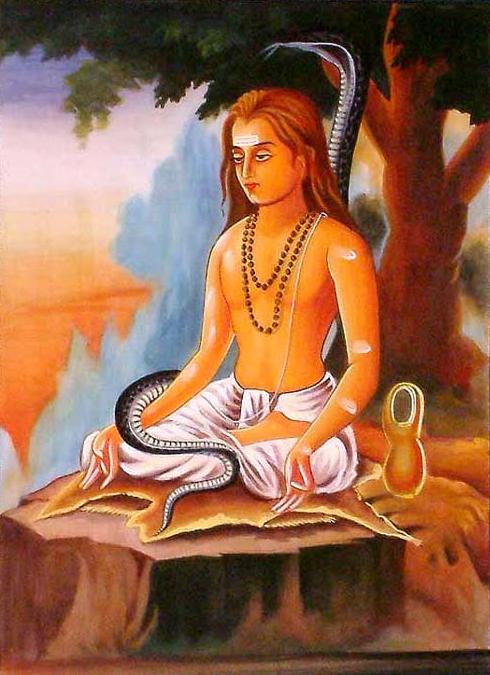
Sant Eknath: In
his meditation, he attined the state of samadhi for hours
together, while a cobra would coil round his neck and spread its
hood like an umbrella on his head.
Lord Vishnu: "The ever perfect one, eternal bliss, being
and thought - see, it is Govinda, source of ecstasy and rapture.
Strength, courage, honor, and exalted spirit - see, we witness
our God sharing all this."
(image
source: Exoticindia.com).
***
He
sang of Lord Vishnu's (Panduranga) real physical presence, who has the earth
and the individual souls as his body:
"How
sweet is the curdling of liquid ghee. So blissful is the seeker,
when the hidden one reveals his form. Dark is he, dark is the
totally unknown and locked is the way to thoughts and words: the
scriptures are silent, the Vedas do not utter a word. Not so the
revealed one. How bright! How near! Our thirst is quenched if
only he appears, who is so dear to our heart. The ever perfect
one, eternal bliss, being and thought - see, it is Govinda,
source of ecstasy and rapture. Strength, courage, honor, and
exalted spirit - see, we witness our God sharing all this. If I
catch a glimpse of God, my eye-sight is restored. I have escaped
the net of life, the guilt of my senses is cancelled. In the
light of the lamp all hidden things are made apparent - so it is
when I think of my God: the god from faraway is here!
(source:
Religions
of India - By Thomas Berry p.
53 and A
Survey of Hinduism - By Klaus K Klostermaier
p. 146).
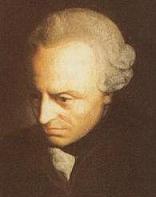 403. Immanuel Kant (1712 –
1804) was apparently the first important German philosopher to
have some acquaintance with Indian philosophy. Kant’s
differentiation between the physical world as seen in the space
and time, and the unknowable thing in itself beyond these
concepts, is very similar to the doctrine of Maya. There are
certain parallels between Kantian thought and Buddhist
philosophy. Like the Buddha, Kant declared a number of questions
unsolvable such as “Has the world a beginning or not?” “Is
it finite or eternal?” 403. Immanuel Kant (1712 –
1804) was apparently the first important German philosopher to
have some acquaintance with Indian philosophy. Kant’s
differentiation between the physical world as seen in the space
and time, and the unknowable thing in itself beyond these
concepts, is very similar to the doctrine of Maya. There are
certain parallels between Kantian thought and Buddhist
philosophy. Like the Buddha, Kant declared a number of questions
unsolvable such as “Has the world a beginning or not?” “Is
it finite or eternal?”
Theodore Stcherbatsky
(1866 - 1942) Russian
Indologist, has shown that Kant’s
doctrine of the categorical imperative has its counterparts in
Hindu philosophy, and has pointed out similarities between
Kantian thought and later Buddhist thinkers like Chandrakirti.
Moreover, according to Hermann Jacobi, Kant’s Aesthetics had
been preceded by Indian writers on poetics.
These are important parallels and strongly indicative of
Kant’s familiarity with Indian philosophy. In his lectures at
Konigberg University in East Prussia from 1756 to 1796, he
talked about the physiography of India and the customs and
manners of the people, and it seems likely that an intellectual
of his genius would have gathered other information about India
and reflected upon it with utmost care and competence.
His
observations about Buddhism in Asia and about Hindus appear to
endorse the view that he had extensive and accurate knowledge of
Indian thought. He said the Hindus were gentle and tolerant of
other religions and nations.
He was very much impressed by the
Hindu doctrine of transmigration which corresponded in some
respects to his own teaching about the destiny of the soul after
death.
Similarly, Kant’s successor, Johann Gottlieb Fichte
(1762 – 1814), includes in his Amweisung Zu einem selingen
Leben (Hints for a Blessed Life) numerous passages which
approximate the Advaita doctrine.
(source: India
and World Civilization - By D. P.
Singhal Pan Macmillan Limited. 1993 p. 234 –
235).
French
Orientalist Anquetil-Duperron
(translated the Upanishads - Oupnekhat from a Persian
translation of Dara Shikoh) pointed out
that Immanuel Kant’s idealism had many things in common with
the Upanishads.
(source:
The
Soul of India - By Amaury de
Riencourt p. 264).
 404.Nancy
Wilson Ross (1901 -1986)
made her first trip to Japan, China, Korea and India in 1939. She
was the author
of several books including The World of Zen and
Time's Left Corner. Miss Ross lectured on Zen Buddhism at the Jungian
Institute in Zurich. She served on the board of the Asia Society
of New York which was founded by John D. Rockefeller III since
its founding in 1956 and was on the governing board of the India
Council. In private life she was known as Mrs. Stanley Young. 404.Nancy
Wilson Ross (1901 -1986)
made her first trip to Japan, China, Korea and India in 1939. She
was the author
of several books including The World of Zen and
Time's Left Corner. Miss Ross lectured on Zen Buddhism at the Jungian
Institute in Zurich. She served on the board of the Asia Society
of New York which was founded by John D. Rockefeller III since
its founding in 1956 and was on the governing board of the India
Council. In private life she was known as Mrs. Stanley Young.
She
has written:
"Anachronistic as
this labyrinthine mythology may appear to the foreign mind, many
of India’s ancient theories about the universe are startlingly
modern in scope and worthy of a people who are credited with the
invention of the zero, as well as algebra and its application of
astronomy and geometry; a people who so carefully observed the
heavens that, in the opinion of Monier-Williams, they determined
the moon’s synodical revolution much more correctly than the
Greeks."
"Many hundreds of years before those
great European pioneers, Galileo and Copernicus, had to pay
heavy prices in ridicule and excommunication for their daring
theories, a section of the Vedas known as the Brahmanas
contained this astounding statement:
“The sun never sets or rises. When people think the sun is
setting, he only changes about after reaching the end of the day
and makes night below and day to what is on the other side.
Then, when people think he rises in the morning, he only shifts
himself about after reaching the end of the day night, and makes day below and night to what is on the
other side. In truth, he does not see at all.”
"The Indians, whose theory of
time, is not linear like ours
– that is, not proceeding consecutively from past to present
to future – have always been able to accept, seemingly without
anxiety, the notion of an alternately expanding and contracting
universe, an idea recently advanced by certain Western
scientists. In Hindu cosmology, immutable Brahman, at fixed
intervals, draws back into his beginningless, endless Being the
whole substance of the living world. There then takes place the
long “sleep” of Brahaman from which, in course of countless
aeons, there is an awakening, and another universe or
“dream” emerges. "
"This notion of the
sleeping and waking, or contracting and expanding, of the Life
Force, so long a part of Hindu cosmology, has recently been
expressed in relevant terms in an article written for a British
scientific journal by Professor
Fred Hoyle, Britain’s foremost
astronomer. "

Shiva, as King of
the Dancers, an embodiment of eternal cosmic energy.
The great god Shiva, whose flame-circled bronze figure in
the role of Cosmic Dancer gives magnificent expression to Hindu
belief in the eternal dualistic creation-destruction rhythm of
the universe.
For
more refer to chapter on Greater
India: Suvarnabhumi and
Sacred
Angkor
***
"Plainly, contemporary Western science’s description of an
astronomical universe of such vast magnitude that distances must
be measured in terms as abstract as light-years is not new to
Hinduism whose wise men, millennia ago, came up with the term
kalpa to signify the inconceivable duration of the period
elapsing between the beginning and end of a world system.
It is clear that Indian religious
cosmology is sharply at variance with that inherited by Western
peoples from the Semites. On the highest level, when
stripped of mythological embroidery, Hinduism’s
conceptions of space, time and multiple universes approximate in
range and abstraction the most advanced scientific thought.
Hinduism has seemed singularly able to accept the
dispassionate impersonality of the All in One without crying out
against it in despair, rage or rebellion. Perhaps this is the
genius of this paradoxical land of so many blended cultures and
people…"
"Hinduism – not only in
philosophy and literature but also in art – has the capacity
for immense conceptions, profound an subtle apprehensions, that
can entice the imagination and stun the mind with their depth,
range and boldness. The many masks of the many gods,
their various appearances and incarnations, have been employed
to suggest the infinitely possible variations of one supreme
essence. In seeking to give expression to that almost
inexpressible idea of a unity which admits also of polarities, a
“union beyond the opposites,” Hinduism created such
arresting icons as the divine two-in-one embrace of Shiva and
Shakti; or Shiva alone, half male, half female, or the two-sided
figure of Hari-Hara, an expression of the seemingly
“opposite” creative-destructive forces of Vishnu and Shiva
embodied in one being.
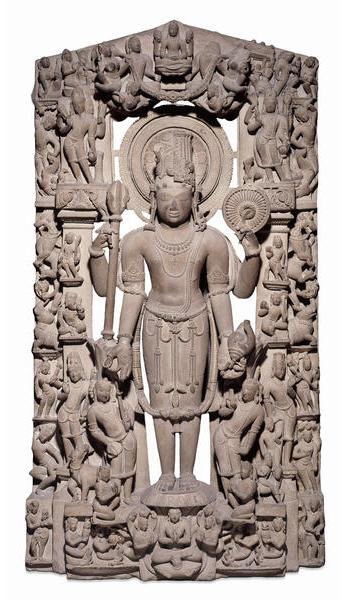
Shiva
Vishnu - destructive and creative forces of God embodied in one
being.
For
more refer to chapter on Greater
India: Suvarnabhumi and
Sacred
Angkor
***
Down the millennia of its existence, Hinduism has made a priceless
contribution to the collective religious life of
mankind through the remarkable findings of her many brilliant
mystics and philosophers, as set forth in a voluminous
literature. Perhaps, however, her most significant contribution
to the universal body of religious inquiry is the persistent,
unshakable belief that union with the Divine is attainable while
one is still on earth. Moreover, any
man in India is at liberty to pursue salvation after his own
fashion with no danger of finding himself at some point branded
as heretic. Indeed, heresy in Hinduism is virtually impossible,
for as the authoritative Upanishads firmly state: “Reality of
One though sages call it by different names.”
(source:
Three Ways of Asian Wisdom – By Nancy
Wilson Ross p. 64 - 67 and 74 - 76).
405. James Henry Tuckwell
( ? ) in his book, Religion
and Reality: A Study in the philosophy of Mysticism
rightly says:
“In our main conclusion we have long ago been anticipated
by the religious philosophy of India. In the West our philosophy
has been surely but slowly moving to the same inevitable
monistic goal. In Professor Ladd of Harvard we have a notable
Western thinker who by a process of careful and consistent
reasoning, concrete in character, has also arrived at the
conclusion that the ultimate reality must be conceived of as an
Absolute Self of which we are finite forms or appearances."
"But it is the crowning glory of
Vedanta that it so long ago announced, re-iterated and
emphasized this deep truth in a manner that does not permit us
for a moment to forget it or explain it away. This great stroke
of identity, this discernment of the ultimate unity of all
things in Brahman or the One Absolute Self seems to us to
constitute the masterpiece and highest achievement of India’s
wonderful metaphysical and religious genius to which the West
has yet to pay the full tribute which is its due.”
(source: Is
India Civilized - Essays on Indian Culture - By Sir John
Woodroffe Ganesh & Co. Publishers 1922
p. 140 - 141).
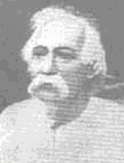 406.
Dr.
Mahendra Lal Sircar (1833 – 1904) was not only the
greatest homoeopath of his time in India, but also a great
scientist. In the field of physical science, Dr. Sircar has made
great contributions and was' a pioneer of scientific research
in India. Dr. J. C. Bose and Dr. P. C. Ray were also inspired by
him. 406.
Dr.
Mahendra Lal Sircar (1833 – 1904) was not only the
greatest homoeopath of his time in India, but also a great
scientist. In the field of physical science, Dr. Sircar has made
great contributions and was' a pioneer of scientific research
in India. Dr. J. C. Bose and Dr. P. C. Ray were also inspired by
him.
He
wrote:
“Some
of their (Hindu) investigations were solid achievements in
positive knowledge as in Material Medica, Therapeutics, Anatomy,
Embroyology, Metallurgy, Chemistry, Physics and descriptive
Zoology. And in these also, generally speaking, Hindu enquiries
were not less, if not more, definite, exact and fruitful than
the Greeks and Medieval Europeans. “
“The
Hindu intellect has thus, independently appreciated the dignity
of objective facts, devised the methods of observation and
experiment, elaborated the machinery of logical analysis and
true investigation, attacked the external universe as a system
of secrets to be unraveled, and has wrung out of nature the
knowledge which constitutes the foundations of Science.”
(source:
Is
India Civilized - Essays on Indian Culture - By Sir John
Woodroffe Ganesh & Co. Publishers 1922 p.
183 - 184).
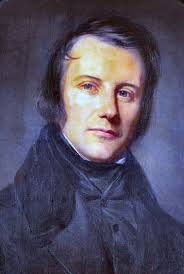 407.
Edgar
Quinet (1803
- 1875) French Historian. His
first publication, the Tablettes du juif errant (Tablets of the Wandering Jew) appeared in 1823. Being struck with
Johann_Gottfried
Herder's
Philosophie der Geschichte (Philosophy of History), he undertook
to translate it, learnt German for the purpose, published his
work in 1827, and obtained by it considerable credit. At this
time he was introduced to Victor Cousin, and made the
acquaintance of Jules Michelet. In 1839 he was appointed professor of foreign
literature at Lyon, where he began the brilliant course of
lectures afterwards embodied in the Génie des religions. Two
years later he was transferred to the Collège de France, and the Génie des
religions itself appeared (1842). 407.
Edgar
Quinet (1803
- 1875) French Historian. His
first publication, the Tablettes du juif errant (Tablets of the Wandering Jew) appeared in 1823. Being struck with
Johann_Gottfried
Herder's
Philosophie der Geschichte (Philosophy of History), he undertook
to translate it, learnt German for the purpose, published his
work in 1827, and obtained by it considerable credit. At this
time he was introduced to Victor Cousin, and made the
acquaintance of Jules Michelet. In 1839 he was appointed professor of foreign
literature at Lyon, where he began the brilliant course of
lectures afterwards embodied in the Génie des religions. Two
years later he was transferred to the Collège de France, and the Génie des
religions itself appeared (1842).
In his Génie
des religions (1841),Quinet introduced the
title ‘The Oriental Renaissance’ to his chapter describing
the event:
‘In the first ardor of their
discoveries, the Orientalists proclaimed that, in its entirety,
an antiquity more profound, more philosophical, and more
poetical than that of Greece and Rome was emerging from the
depths of Asia. … [One that promised] a new Reformation of the
religious and secular world. … This is the great subject in
philosophy today.’
Quinet believed that:
‘When
human revolutions first began, India stood more expressly than
any other country for what may be called a Declaration of the
Rights of the Being. That divine Individuality, and its
community with infinity, is obviously the foundation and the
source of all life and all history.’
(source:
The
Oriental Renaissance: Europe’s Discovery of India and the
East, 1680-1880 - By Raymond Schwab, p. 11 New
York, 1984).
Quinet was a strongly anticlerical French historian and intellectual who
venerated India wrote thus in 1842:
“India made, more loudly than anyone, what we might call the “declaration of the
rights of the Being.” There, in this divine self, in this society of the
infinite with itself, lies clearly the foundation, the root of all life and all
history.”
(source:
Jean Biès, Littérature
française et pensée hindoue des origines
à 1950, p. 100).
 408.
Alun Lewis (1915 -1944) was one of the few
great British writers of the Second World War. His early death
at the age of twenty-eight robbed Wales of its most promising
poet and story writer. Born and brought up near Aberdare in
south Wales, the son of a teacher, he read history at
Aberystwyth and Manchester. After a period of unemployment he
became a teacher in south Wales, before enlisting in the Royal
Engineers in 1940. Later
in 1942 Lewis's new regiment, the South Wales Borderers,
travelled to India. His experiences there are recreated in the
beautiful poems of Ha! Ha! Among the Trumpets and the stories
and letters of In the Green Tree. 408.
Alun Lewis (1915 -1944) was one of the few
great British writers of the Second World War. His early death
at the age of twenty-eight robbed Wales of its most promising
poet and story writer. Born and brought up near Aberdare in
south Wales, the son of a teacher, he read history at
Aberystwyth and Manchester. After a period of unemployment he
became a teacher in south Wales, before enlisting in the Royal
Engineers in 1940. Later
in 1942 Lewis's new regiment, the South Wales Borderers,
travelled to India. His experiences there are recreated in the
beautiful poems of Ha! Ha! Among the Trumpets and the stories
and letters of In the Green Tree.
After
E M Forster, the only British writer, to find the Imagination
physically confronted by India was Alun Lewis, whose early death
in the jungle is frequently regarded as a sad loss to
literature. One of his last stories, “The
Earth is a Syllable”
acknowledges
its debt to the Upanishads
both by its title and within the story itself.
(Note:
‘The
Earth is a Syllable’ deserves to be considered as his passage
to more than India. Lewis's short story is read in terms of
the Upanishad from which it takes its title and his death
considered in the light of both).
The
story takes its title from a short and important Upanishad, the
Mandukya, but it also includes a reference to the older Brihad
Aranyaka, to which the Mandukya Upanishad is itself indebted.
What
the story shares with the two Upanishads (the two which also
especially attracted the attention of Yeats) is a concern to
discover the stages of enlightenment a man may pass through
before his death. Perhaps the closest approach poetry has made
to mysticism is to say, as does the first line of the Mandukya
Upanishad, that the whole Earth is the syllable Om, a mystic
utterance thought not only to be inclusive of all sound in the
mouth and thus all language but to be the Logos which is
creation.
The
Earth is a Syllable' is the story of a soldier who, as he lies
mortally wounded in an unspecified part of the jungle,
experiences the various stages of consciousness towards
enlightenment. The opening line of the Brihad
Aranyaka comes to the soldier’s mind close upon
that of the Manduky Upanishad: “the dawn is the head of a
horse.
In
‘The Earth is a Syllable’ Lewis reveals his
familiarity with both the Brihad Aryanka and the Mandukya
Upanishad.
(source:
India
and the Romantic Imagination - By John Drew p.
285 - 294).
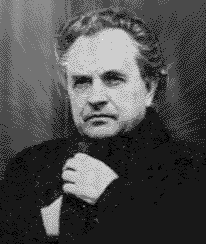 409.
Alexander Zinoviev
(1922
- ) Russian
sociologist and works in Russian Academy of
Sciences. He has
been many times in India and interested in Indian culture. 409.
Alexander Zinoviev
(1922
- ) Russian
sociologist and works in Russian Academy of
Sciences. He has
been many times in India and interested in Indian culture.
He
has recently written:
"
But I would like to believe Hinduism is too valuable for
humanity, and sacred Indian books contain too much precious and
unique knowledge that it will not sink in oblivion. I’d like
to believe that the principles of Indian philosophy and religion
are much more in agreement with the needs for the future than
any other religion in the world, in agreement with the tendency,
known in Western countries as New Age. It’s my deep belief
that without India the world will sink in spiritual darkness and
ignorance."
"So, what must be done in order to save Hinduism and stop
the Islamic flood? There is only one way and it is called mass
conversion of Muslims into Hinduism. If Hindus want to survive,
they must convert. They must adopt the strategy of Catholic
missionaries and Muslim mullahs. I don’t mean only conversion
of one-time Hindus that only recently adopted other religions.
"Hinduism
must convert also people of non-Hindu origin. The fact that they
live in India is enough because all Indians, notwithstanding
their religious affiliation, had once had Hindu ancestors."
(source:
For
India’s survival Hinduism has to prevail - By
Alexander Zinoviev - organiser.org and
http://www.organiser.org/dynamic/modules.php?name=Content&pa=showpage&pid=102&page=33).
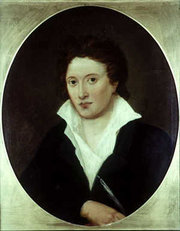 410.
Percy Bysshe Shelley (1792 - 1822) was one of the major English Romantic poets. He
is perhaps most widely famous for such anthology pieces as
Ozymandias, Ode to the West Wind, To a Skylark, and The Masque
of Anarchy; but his major works were long visionary poems such
as Adonais and Prometheus Unbound.
Shelley's unconventional life and uncompromising idealism made
him a notorious and denigrated figure in his own life, but he
became the idol of the following two or three generations of
poets (including the major Victorian poets Robert Browning,
Alfred Tennyson, Dante Gabriel Rossetti and Algernon Charles
Swinburne, as well as William Butler Yeats). Both Percy Bysshe
Shelley and his wife Mary Shelley were strong advocates of
vegetarianism. 410.
Percy Bysshe Shelley (1792 - 1822) was one of the major English Romantic poets. He
is perhaps most widely famous for such anthology pieces as
Ozymandias, Ode to the West Wind, To a Skylark, and The Masque
of Anarchy; but his major works were long visionary poems such
as Adonais and Prometheus Unbound.
Shelley's unconventional life and uncompromising idealism made
him a notorious and denigrated figure in his own life, but he
became the idol of the following two or three generations of
poets (including the major Victorian poets Robert Browning,
Alfred Tennyson, Dante Gabriel Rossetti and Algernon Charles
Swinburne, as well as William Butler Yeats). Both Percy Bysshe
Shelley and his wife Mary Shelley were strong advocates of
vegetarianism.
In his essay "A
Refutation of Deism", composed in 1812-13, and
privately published in 1814, Shelley mounts a frontal attack on
Christianity but declares himself "willing to admit that
some few axioms of morality which Christianity has borrowed from
the philosophers of Greece and India dictate ... rules of
conduct worthy of regard."
The Indian element in Shelley has
been noticed by several critics. Sydney Owenson's novel, The
Missionary, An Indian Tale, is a book that appealed
to Shelley very much. It narrates the story of a Catholic
missionary proceeding to India where he meets a veiled Hindu
priestess who is a devotee of mystic love and Vishnu. Shelley
recommended this novel to Hogg in his letter of June 21, 1811.
Robert
Southey’s Curse of Kehama
was a favorite poem with Shelley. On December 17, 1812,
Shelley ordered a list of books from Thomas Hookham. Among those
supplied was a book entitled Hindu
Pantheon by Edward Moor
(London 1810). There is a great deal in it that would have
fascinated Shelley’s imagination. The symbol of the eagle and
the serpent is one of the archetypes of the human imagination.
The Mahabharata begins with a long account of this myth.
Moor’s book is abundantly illustrated.

Vishnu and
Lakshmi on Sesha or Ananta contemplating the Creation, with
Brahma springing on a lotus from his navel to perform it.
***

Surya, the Sun
God.
From a cast in
the Museum at the India House.
(image source: Vedanta
and Shelley - By S R Swaminathan p. 1 - 60 and
India
and the Romantic Imagination
- By John Drew).
***
There are numerous
pictures showing Hindu deities in their association with
serpents as emblems of eternity. In particular Vishnu and
Lakshmi are shown as Sesha or Ananta or Anantanaga – the
endless eternal serpent. Seshnaga the eternal coiled serpent on
which Vishnu reclines.
In the Revolt
of Islam, Shelley uses the serpent explicitly as the
symbol of Eternity, and of good and evil in Time. Shelley had
already portrayed Cythna and Laon as avatars of Lakshmi and
Vishnu. His idea of nonviolence and its Indian basis of ahimsa
are discussed by Art Young in his book, Shelley and Nonviolence.
Shelley was
also familiar with Sir William Jones’s
translations from Sanskrit. Besides the books cited, Shelley
would have read others in the India Library at London. Whatever
his sources, there is ample evidence in his poem of the appeal
of Vedantic ideas, myths and symbols to him. His
fervor springs from his innate mysticism aided no doubt by his
wide reading. He believed the sacred
writings of Christianity had their source in “the Brahmanical
records of the early history of the world,” its institutions
in the “ancient worship of the Sun,” and its axioms of
morality in “the maxims of the philosophers of Greece and
India.”
Prometheus
Unbound is unique in world literature as an
imaginative fusion of the Hindu and Greek branches of ancient
wisdom. Its core is the identification
of Prometheus and Asia with Vishnu and Lakshmi, and the
philosophy of The One above the Maya of cyclical time. Following
Jacob Bryant and Sir William Jones, Shelley traces all
mythologies and religions to their common source in the worship
of the Sun and Agni as symbols of divine light.
Throughout
the play Shelley uses Hindu ideas of the Yugas of
time.
Prometheus has suffered through “three thousand years of the
hours” He prefers the idea of the cycles of the four yugas
moving to and fro between the golden and iron ages in Hindu
myths of periodic time to the concept of linear time. From Queen
Mab to Prometheus Unbound the Hindu myth of avatars
appear from time to time to restore cosmic order after its decay
recurs in Shelley.
Shelley
valued the finer truths of Hinduism embodied in its myths. He
uses them from his first philosophical poem Queen Mab,
to his last, “The Triumph of Life”,
Prometheus Unbound is a sublime synthesis of the best in
mystical thought and feeling in the East and the West.
His tutor Frank Newton
who converted him to vegetarianism. Towards the end of his life
he desired to migrate to India. Shelley had desired
to seek employment in India, and was disappointed when Thomas
Peacock whom he consulted wrote to him it was not possible.
(source: Vedanta
and Shelley - By S R Swaminathan p. 1 - 60 and
India
and the Romantic Imagination
- By John Drew). (Note:
Even though famous for his Ode To the West Wind, (If winter
comes`85can spring be far behind), Percy Byshe Shelley has an
Indian connection too. A rare pamphlet containing a hitherto
unread poem by Shelley, containing references to British
oppression in India and elsewhere, has been
discovered. The pamphlet has excited scholars, who knew that it
had been searched for in vain since 1811.(source:
Shelley’s
India link - tribuneindia.com).
411. Professor
John Stuart Mackenzie (1860 – 1935) commented on
Indian religion and metaphysics. He writes in his book Elements
of Constructive Philosophy published in 1918 p. 475
“The
Religion that is most nearly akin to a philosophical
reconstruction would seem to be that of Brahmanism.”
(source: Is
India Civilized - Essays on Indian Culture - By Sir John
Woodroffe Ganesh & Co. Publishers 1922
p. p. xxxv).
 412.
Ranchor Prime
( ?
) was born in Leeds and has spent his life as a devotee of
Krishna in Britain and India. He now works with the World Wide
Fund for Nature as their Religious Network Officer in UK. He is
also currently running a tree planting and restoration project
in Vrindavan, India, on behalf of WWF. 412.
Ranchor Prime
( ?
) was born in Leeds and has spent his life as a devotee of
Krishna in Britain and India. He now works with the World Wide
Fund for Nature as their Religious Network Officer in UK. He is
also currently running a tree planting and restoration project
in Vrindavan, India, on behalf of WWF.
He
is the author of several books including Vedic
Ecology: Practical Wisdom for Surviving the 21st Century and
Ramayana:
A Journey he has observed:
“The West has much to learn from
the wisdom traditions of India. Having exposed most of the rest
of the world to our own traditions, and having largely abandoned
them ourselves, we now need to learn from others; to put aside
our swords and guns, our computers and microscopes, our cars and
televisions, and have the courage and the vision to journey to
new territory where these seemingly indispensable aids may be of
little value.
Reincarnation
is a good
example of a teaching which has been largely ignored by Western
civilization, despite the fact that it has existed in one form
or another in the unofficial religions of Europe. It is
important because it stresses the equality of all life forms and
their transience too. It does not
support the human-centred culture of the West which permits
human society to terrorize the animal kingdom and dominate the
cycles of nature for its own convenience. Nor does it support
the empire-building mania of the European societies who wanted
to possess as much of the world as they could, believing that
they only had one life in which to do it all. It is these
attitudes that have encouraged us in our present path of
industrial and technological war upon nature and the world."
Reincarnation and other knowledge of the spirit is taught by
the Vedas, the sacred books
of the Hindus. They contain the collected wisdom of the Vedic
culture, the world’s oldest living civilization, which in
modern times has come to be known as Hinduism."
Western
civilization considers human life to be sacred, but Hindus have
gone much further and said that not only human life but all
life is sacred. Therefore all life forms, not just human beings,
must be revered and respected. This is the reason for being
vegetarian, which is ecological in the deepest sense.

Parvati devi
(goddess) - bronze.
Earth is our
mother, earth is goddess, earth is Kali, earth is Parvati, earth
is Sita, Earth mother - and she is the home of God.
The Isa
Upanishad says it all. Nature is sacred, all life is
sacred, the whole earth is sacred. That is the Hindu
contribution. Western industrial life has become desacrilised
***
Hinduism
is a holistic religion.
It is a way of life rather than a religion or a set of beliefs.
It includes economic life, sexual life, political life -
everything is part of Hindu religion. 'Religion' is a Western
word, and so is 'Hindu'. A correct description is
'Sanatan Dharma'. Sanatan means eternal, and dharma means the true state.
The dharma of fire is to burn; the dharma of water is to quench
thirst. So 'sanatan dharma' means to find the true, everlasting
state of being, the eternal path. Hindus (we call them Hindus,
but we mean the Indian people) are searching for the dharma of
the soul, the meaning of life. That is the quest.
The Isa
Upanishad says it all. Nature is sacred, all life is
sacred, the whole earth is sacred. That is the Hindu
contribution. Western industrial life has become desacrilised.
The only sanctity left is human life. We have to push the
frontier beyond human and include the whole earth. Earth is our
mother, earth is goddess, earth is Kali, earth is Parvati, earth
is Sita, Earth mother - and she is the home of God.
(source: Hinduism and Ecology: Seeds
of Truth - By Ranchor Prime p. 1 - 6
and 78).
413. Edward J Urwick
( ? ) British
intellectual and the late Ratan Tata Professor of Social Science
in London University, remarks:
“I will not attempt -
it will need a separate volume – to show how the Indian
thought may have filtered through Socrates and Plato; how far it
may have reached Plato in his wanderings, how far through
Pythagoras, how far even before the death of Socrates, a direct
stream of the Eastern doctrine may have flowed through Asia
Minor into Greece. But I affirm very confidently that if any one
will make himself familiar with the old Indian Wisdom –
Religion of the Vedas and the Upanishads, will shake himself
free, for the moment, from the academic attitude and the
limiting western conception of philosophy, and will then read
Plato’s dialogues, he will hardly fail to realize that both
are occupied with the self-same search, inspired by the same
faith, drawn upwards by the same vision.”
Urwick maintains that, in order to understand Plato’s
Republic, we should first
grasp the fundamentals of Hindu thought.
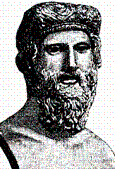 Comparing the social thought of Manu
and Plato, he writes: Comparing the social thought of Manu
and Plato, he writes:
“Again, just as Manu of ancient India instituted the caste
system upon the basis of the three principles in the individual
soul, so Plato divides his state into three classics,
representing the three psychical elements. The lowest caste of
producers and traders, corresponding to the vaishya caste,
reflects the element of ignorant desire, Epithumia. The class
next above this, the Auxiliaries, corresponding to the Kshatriya
caste, reflects, the passionate element, Thumos. The highest
class, the Guardians, corresponding to the Brahmin caste,
represents the principle of prudent reason, the Logistikon.”
(source: The Message of Plato – By
E J Urwick p. 14 and 28 - 29).
414.
Karl Christian Friedrich Krause
(1781 - 1832) was even more strongly influenced by Indian
philosophy. He praised the Vedanta particularly in his
Vorlcsungen uber die Grundwahrheiten der Wissenschaften (1829),
although he wrote on Buddhism, Jainism, and the Carvakas.
(source: India
and World Civilization - By D.
P. Singhal Pan Macmillan Limited 1993 p. 236).
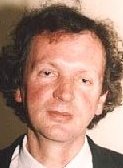 415.
Rupert
Sheldrake (1942 -
) is a biologist and author of more than 75 scientific
papers and ten books. A former Research Fellow of the Royal
Society, he studied natural sciences at Cambridge University,
where he was a Scholar of Clare College, took a double first
class honours degree and was awarded the University Botany
Prize. He then studied philosophy at Harvard University, where
he was a Frank Knox Fellow, before returning to Cambridge, where
he took a Ph.D. in biochemistry. 415.
Rupert
Sheldrake (1942 -
) is a biologist and author of more than 75 scientific
papers and ten books. A former Research Fellow of the Royal
Society, he studied natural sciences at Cambridge University,
where he was a Scholar of Clare College, took a double first
class honours degree and was awarded the University Botany
Prize. He then studied philosophy at Harvard University, where
he was a Frank Knox Fellow, before returning to Cambridge, where
he took a Ph.D. in biochemistry.
When
he was 44, he first went to
Hyderabad, India, in 1968 as a plant biologist, more than just
pollen and dirt rubbed off on him. He began digging into the
Vedas and Upanishads, examining Buddhist doctrine and Sufi
mysticism. He learned meditation. In 1974, India became this
Briton's home, and his views of biology were becoming radically
altered by his Eastern musings. Eventually, he would create a
science theory so wide that it carried an ethical message of
being psychically responsible for our thoughts and actions. It
was so deep it receded back through transcendent creation gods
to a God state that reads like many Upanishadic passages.
He
would say in 1987, "My ideas find readier acceptance in the
Buddhist and Hindu traditions of the East than in Western
culture."
Sheldrake saw how a subtle, trans-physical field
was responsible for defining, regulating and advancing
biological form and intelligence - like the akashic
form-building of the Vedas. In 1978, Sheldrake entered an ashram by the
sacred Cauvery River in South India. Here he extended his
biological insights to include inorganic matter, formulated a
scientifically testable theory and wrote a brilliant book, A New
Science of Life. He called his theory "formative
causation." It simply stated that the combined form and the
learned intelligence/behavior of anything appearing in the
universe - from an atom to man-is guided by a single
morphogenetic (form-evolving) field: M-field for short. One
field per new form, no matter how numerous it appears in our
universe. According to Hindu
metaphysics, this is precisely how the interior astral universe
works.
(source:
Hinduism
Today February 1988).
He spent seven years in India
where he wrote his first book, A New
Science of Life (1981), while living at an ashram
there. That book soon became the target of criticism among
Sheldrake's peers, who view many of his theories, at best, as
"unconventional." In 1968, Sheldrake went to India for
three months while on his way to Malaysia to study tropical
botany. Even after a year in Malaysia, he couldn't forget what
he'd seen in India. "That had a huge impact on me," he
says. "I suddenly saw this astonishing culture which I
found completely fascinating, which had riches and depths beyond
anything I had ever been taught about in England."
"One of the effects of this exposure to India was to put
the scientific perspective on the world that I had learned in
Cambridge into a much wider context," he says.
"I
saw that this was one rather limited way of looking at things. I
was also much influenced by Indian meditation practices,
starting with Transcendental Meditation around 1970, and various
other forms of meditation and Yoga over the years. This gave me
a different perspective on the workings of the mind and on
realms of experience I had not known about before."
For the first time,
Sheldrake was exposed to the teachings of Hinduism.
"I
was impressed by the way that Hindus relate to the land of India
and the holy places, and was moved by the great variety of
pilgrimages and holy animals and plants and festivals. There are
so many aspects of Hinduism that link it to the land and to the
natural world in India. It is also closely linked to the culture
and languages of India. I realized that as an English person I
could never fully enter into those aspects of Hinduism."
(source:
Rethinking Science - http://www.hinduismtoday.com/archives/2001/9-10/40-43_sheldrake.shtml).
 416.
Stephen Cope (
? ) is a psychotherapist who writes and teaches
about the relationship between contemporary psychology and the
Eastern contemplative traditions. He is currently
Scholar-in-Residence at the Kripalu Center for Yoga and Health
in Lenox, Massachusetts, the largest residential yoga center in
the world. 416.
Stephen Cope (
? ) is a psychotherapist who writes and teaches
about the relationship between contemporary psychology and the
Eastern contemplative traditions. He is currently
Scholar-in-Residence at the Kripalu Center for Yoga and Health
in Lenox, Massachusetts, the largest residential yoga center in
the world.
He
has written about Yoga:
"Here is a language that, unlike our current
psychological language, is deeply concerned with the
relationship between the soul and the self, the body and the
soul, the divine and the human. Here is a systematic exploration
of the unconscious that predates Freud by thousands of years.
Here is a philosophy that understood life as archetypal
pilgrimage to the center long before the New Age. Here is a
psychological language not yet rendered impotent by cliché or
commercialism, and, even more refreshingly, one that is
uncomplicated by Calvinism and Puritanism and is free of the
Western obsession with guilt and shame. "
"Yoga puts our experience of enlightenment at the exact center
of our being. Though we may appear separate from one another, we
are no more separate than the wave is separate from the sea, or
than the air in a glass jar is separate from the surrounding
air. We are pervaded by and animated by the same spirit, the
same nature, and that nature is constant through the manifold
changes of birth, growth, and dissolution; it cannot be wounded,
or separated from itself. "
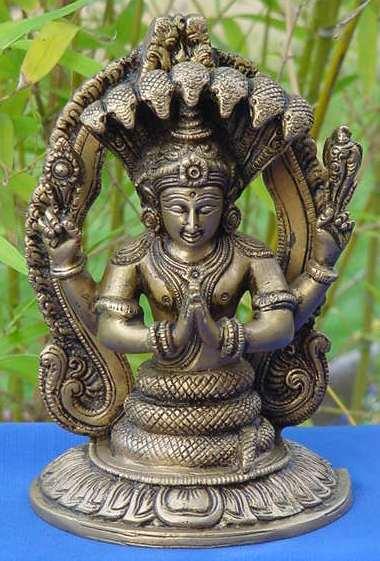
Sage
Patanjali
- author of Yoga Sutra.
***
“Born divine” is a notion that fairly saturates Indian
philosophy and spiritual practice. It was first systematically
articulated in the tradition known as Vedanta, which arose on
the Indian subcontinent as early as 600 BCE, and has been
powerful force in Indian spiritual history even to the present
day. Most of the branches of Vedanta hold one fundamental view
in common: all individual souls are one with the great river of
life, we are all, in effect, just a single soul. We are, in the
classical dictum, “One without a second.”
(source: Yoga and the Quest for the
True Self - By Stephen Cope p. xii and 42).
 417.
Paul Utukuru (Gopala
Rao) ( ? ) has
a Master's degree in Physics and a Doctor of Science degree in
Radiological Science. During his professional career as a
medical physicist, he published widely in the field of the
physics of medical imaging and radiation oncology. Since his
retirement from the Johns Hopkins University in 1995, Utukuru
has been active in matters related to bridging the gap between
Science and Religion. His writings and lectures reflect his
interests from the point of view of Neurotheology, Spiritual
Transformation, Christian ethics, Epistemology and Hindu
Cosmology. He is a
retired medical physicist in the Science
and Theology News, a French monthly newspaper. 417.
Paul Utukuru (Gopala
Rao) ( ? ) has
a Master's degree in Physics and a Doctor of Science degree in
Radiological Science. During his professional career as a
medical physicist, he published widely in the field of the
physics of medical imaging and radiation oncology. Since his
retirement from the Johns Hopkins University in 1995, Utukuru
has been active in matters related to bridging the gap between
Science and Religion. His writings and lectures reflect his
interests from the point of view of Neurotheology, Spiritual
Transformation, Christian ethics, Epistemology and Hindu
Cosmology. He is a
retired medical physicist in the Science
and Theology News, a French monthly newspaper.
He has recently
written:
"Brahma,
Vishnu and Shiva are said to be the creator, sustainer and the
destroyer respectively of the universe in Hinduism. Setting
aside the personified symbolism here, the idea can be seen as an
extrapolation of what is observed on earth to the universe at
large: birth, growth, decay and recycling are central to
everything we observe in the world within us and around us.
Extrapolation from the particular to the general is commonly
done in science, especially physics.
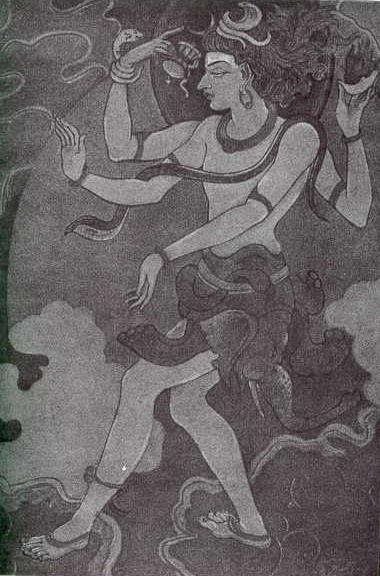
"Brahma,
Vishnu and Shiva are said to be the creator, sustainer and the
destroyer respectively of the universe in Hinduism.
***
Based on similar
considerations, some ancient astronomers seemed to have arrived
at the conclusion that the creation of the universe, its growth,
its eventual decay and regeneration are eternal processes
without a beginning and without an end, repeating in endless
cycles. The Hindus named each half cycle a night or day of
Brahma in symbolic terms. There is also the mention of a
transition or a twilight zone referred to as Yugasandhi
between these half cycles.
The
metaphor extends to some amazing mathematical details.
According to the Hindu scriptures,
each half cycle is said to last for 4.32 billion years. The Sun,
too, revolves around the center of our galaxy once in 325.5
million years. Modern science pegs this in the range of 225 to
270 million years. The point of departure between ancient Hindu
cosmology and modern cosmology is that unlike modern cosmology,
ancient Hindu cosmology relates the rotational speed of our own
galaxy to the period of oscillation of the endless cycles of
creation, growth and eventual decay. Our known galaxy is known
as Parameshti Mandala, and
it is said to rotate around Svayambhu
Mandala, the center of all galaxies with a time
period of 4.32 billion years,
Pursuing
this chronology further in detail, it can be shown that the
present day of Brahma began exactly 5 Brahma hours, 28 minutes
and 40 seconds ago as of April 1, 1986. Going a step further,
they calculate the age of our present universe is 19.252 billion
years, amazingly close to the modern-day estimate. Modern
historians have also documented that according to some ancient
Hindu scriptures, the Sun is 108 Sun-diameters from the earth
and the moon 108 Moon-diameters away. The modern values for
these figures are 107.6 and 110.6 respectively.
Parenthetically, the number 108 has special
significance in astrology and in most Hindu rituals even today.
The rosaries used in many Hindu and Buddhist chanting routines
contain exactly 108 beads."
(source:
Paul
Utukuru
- June
6 2005). Refer to Ancient
Hindu Cosmology and Modern Cosmology - By Paul Utukuru.
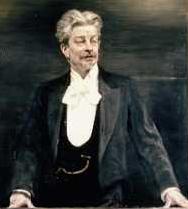 418.
Georg Morris Cohen Brandes (1842 –
1927) was born in Copenhagen of
middle-class Jewish parents. He was a Danish critic and scholar
who had great influence on Scandinavian literature from the
1870s through the turn of the 20th century.
He is the author of several books including Jesus,
A Myth and The
World at War and Voltaire
and Friedrich
Nietzsche 418.
Georg Morris Cohen Brandes (1842 –
1927) was born in Copenhagen of
middle-class Jewish parents. He was a Danish critic and scholar
who had great influence on Scandinavian literature from the
1870s through the turn of the 20th century.
He is the author of several books including Jesus,
A Myth and The
World at War and Voltaire
and Friedrich
Nietzsche
In the midst of these polemics
the critic began to issue the most ambitious of his works, Main
Currents in the Literature of the Nineteenth Century,
of which four volumes appeared between 1872 and 1875 (English
translation, 1901-1905). The brilliant novelty of this criticism
of the literature of major European countries at the beginning
of the 19th century, and his description of the general revolt
against the pseudo-classicism of the 18th century, at once
attracted attention outside Denmark.
Brandes
claimed that:
‘His spiritual home was on the
banks of the Ganga.”
(source: Main
Currents in the Literature of the Nineteenth Century vol. 1. p. 126).

Shivala
Ghats in Benares
(image
source: Painting done by Thomas and William Daniell
in 1789).
***
 419.
His Divine Grace
A. C. Bhaktivedanta Swami Prabhupada
(1896 - 1977) The founder of ISKCON
- The
International Society for Krishna
Consciousness also
known as 'the Hare Krishna' was founded in 1966. its core
philosophy is based on scriptures such as the Bhagavad-Gita
and Srimad Bhagavatam, both of which date back many years into
antiquity. 419.
His Divine Grace
A. C. Bhaktivedanta Swami Prabhupada
(1896 - 1977) The founder of ISKCON
- The
International Society for Krishna
Consciousness also
known as 'the Hare Krishna' was founded in 1966. its core
philosophy is based on scriptures such as the Bhagavad-Gita
and Srimad Bhagavatam, both of which date back many years into
antiquity.
The distinctive appearance of the movement, and its
culture come from the Gaudiya Vaishnavism
tradition, which has had adherents in India ever
since the late 1400s.
After publishing three volumes of
the Bhagavatam, Srila Prabhupada came to the United
States, in September 1965, to fulfill the mission of his
spiritual master. Subsequently, His Divine Grace wrote more than
fifty volumes of authoritative commentated translations and
summary studies of the philosophical and religious classics of
India.
When he first arrived by freighter in New York City,
Srila Prabhupada was practically penniless. Only after almost a
year of great difficulty did he establish the International
Society for Krishna Consciousness, in July of 1966.
ISKCON formed
to help spread the practice of Bhakti yoga (the yoga of
devotion). Bhaktas, or devotees, dedicate their devotion towards
Krishna,
who they call "The Supreme Lord" or (God); Radha, who
is Krishna's divine consort; and the many other incarnations of Lord
Vishnu,
such as Sita and Rama.
Devotees believe that the sound vibration created by
repeating these names of God gradually induces pure
God-consciousness, or "Krishna consciousness."
Hare
Krishna Hare Krishna
Krishna
Krishna Hare Hare
Hare Rama Hare Rama
Rama Rama Hare Hare
The
founder of ISKCON, Srila Prabhupada stated that 'Krishna' and 'Rama'
are both names of God and Hare (vocative of 'Hara' and
pronounced "ha ray") refers to God's Energy or 'Shakti',
known as Srimati Radharani.

Lord
Vishnu - Vaikuntha from Nepal.
The
distinctive appearance of ISKCON movement, and its culture come
from the Gaudiya Vaishnavism tradition, which has had adherents
in India ever since the late 1400s.
For
more refer to chapter on Greater
India: Suvarnabhumi and
Sacred
Angkor
***
(source: online).
Refer to Krishna.com
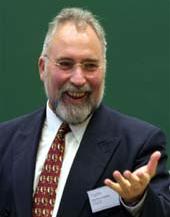 420. Jean-Pierre
Lehmann is professor of International Political Economy at IMD — a
leading international business school, based in Lausanne,
Switzerland. He also is an adviser to WTO Director General, Dr.
Supachai Panitchpakdi. Mr.
Lehmann studied in Japan, Switzerland, the United States
(Georgetown) and received his doctorate from Oxford. 420. Jean-Pierre
Lehmann is professor of International Political Economy at IMD — a
leading international business school, based in Lausanne,
Switzerland. He also is an adviser to WTO Director General, Dr.
Supachai Panitchpakdi. Mr.
Lehmann studied in Japan, Switzerland, the United States
(Georgetown) and received his doctorate from Oxford.
He
eloquently talks about the dangers of Monotheism in the Age of Globalization.
As
Jean-Pierre Lehmann argues, monotheistic religions have caused
much turmoil throughout history - and continue to do so today.
What is needed is a new global ethical and spiritual role model,
and in his opinion, the best candidate to fill that spot is
India.
He has written:
“The great pre-Christian civilizations of Greece and Rome
had no religious wars and had a far healthier view of their
frolicking gods and goddesses than the intolerant monotheistic
Christianity that later came to dominate Europe.”
“Polytheistic religions also tend to have a far more
positive and healthier attitude to sex, which is seen as a good
thing, than do the monotheistic faiths, where there is a much
stronger tendency to equate sex with sin.”
“India's one billion plus population is the most
heterogeneous in the world. There are far more ethnic,
linguistic and religious groups than in, say, the European
Union. Yet, a far greater degree of unity has been achieved
among India's disparate ethnicities than among the tribes of
Western Europe.”
“But
in a global environment desperate for ideas, philosophy and
religion, India is the most prolific birthplace of all three -
because of the great synergy of democracy and diversity, and the
much greater degree of self-confidence that Indians now feel.
Indians and members of the enormous Indian Diaspora - over which
the sun never sets - are the thought leaders in economics,
business, philosophy, political science, religion and
literature.”
“The
planet needs quite desperately a sense of moral order,
spirituality and an ethical compass. The Indian religious and
philosophical traditions can provide a great deal of all three.
It was in a recent conversation with an Indian religious guru
that I was also pleased to discover I could adhere to his
religious tenets, while maintaining my secular convictions. No
imam or priest would allow me that.”
“The
planet also needs an alternative geopolitical force to the
American Christian Fundamentalist brand of hegemonic thinking
that the Bush Administration has generated - and that is not
likely to evaporate even after his departure from office.”
“Europe
is an inward-looking and, in many ways, spent force. China is a
dictatorship. The Islamic world is going through an awkward
moment - to put it mildly.”
“Hence
the importance of the role India must play in this respect -
both because of its innate qualities and because there is no
other serious contender. The 21st century better become the
century inspired by the virtues of Indian polytheism - or else
we are headed for disaster.”
(source:
The Globalist.com - Global Development Thursday,
March 30, 2006).
Quotes421_440
Top
of Page


Page < 1 2 3 4 5 6 7 8 9 10 11 12 13 14 15 16 17 18 19 20 21 22 23 24 >
|